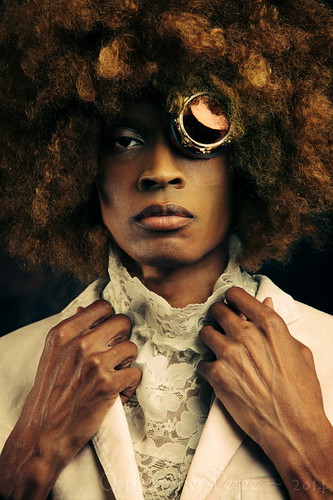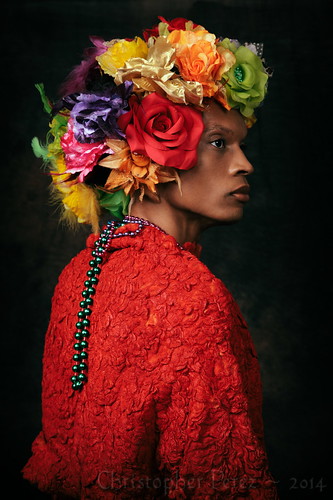In the previous post I said... to illustrate the vastness of the treasure trove of art that I
contend set the foundation for the reclining nude in photography, here
is an extremely short list of works.
Mesopotamia 1800bc works depicting the human body
Ancient Greece 750-300BC works depicting the human body
Giorgione 1510 "Dresden Venus", Titian's teacher
Titian 1538 "Venus of Urbino" (aka Reclining Venus)
Bouchet 1743 "Pan et Syrinx"
Canova 1805 "Venus Cictrix"
Manet 1865 "Olympia"
Cabanel 1863 "Birth of Venus"
Modigliani 1917 "Reclining Nude"
There are more than a few interesting historical notes about this art. I am choosing just one work to talk about, and that is "Olympia" by Eduard Manet.

Here's an easy one to begin my comments and observations.
I've read that "Olympia" is bold because this was the first
painting in the history of reclining nude art where the primary subject
is looking directly at the viewer.
Um. No.
For
"boldness" of gaze, how do we evaluate Titian's earlier
work? Am I blind or is Titians model not looking directly as us, the viewers?

Another story
I've read about Manet's famous painting is that no one would buy it. The first sale of one of his paintings was celebrated as a
good beginning. Except it wasn't. He sold rather few paintings during
his lifetime.
Manet came from a wealthy family and did what he wanted. He painted. Economically his art was pretty much a failure. His mother gave him a enough money he could rent and outfit a large place in Paris. After she tired of waiting for Manet's career to develop so he could support himself she cut him off and had him move himself and his family in with her.
"Olympia" never sold and the Manet estate gave the painting to the France.
This is why it hangs in the musée d'Orsay and is not squirreled away in
some private collection somewhere for no one to see. There was something not quite right about it. But yet it's now famous. Why?
The painting was, in fact, shown at the 1865 Paris
Salon. The curators of the Salon hung it way up high so as to make it very difficult
to see. Though, from the sounds of things, this didn't prevent people from bringing binoculars to have a better look at things (as was common practice at the time for just about any controversial work).
This is where the myth of the poor oppressed "Impressionist" painters comes in.
When needing a special wine for a special occasion people often visit a specialist who purports to be able to help them untangle the mysterious web of tastes, choices, regions, and the broadcasting and impressing others with the subtle refinement tof "your" choice of beverage. Seldom to people know for themselves which wines go "best" with whichever dish. It takes time and desire to learn to reach the point of being able to comfortably select the "right" wine for the occasion.
Something similar happens in art. We are _told_ what is famous. The tellers are the supposed specialists and "know things" that we often don't.
With this in mind, it
was easy for me to get caught up in the "myth" of Impressionists
being outcasts from Parisian art circles. For the way the story is commonly told, it is difficult not to feel
sorry for them.
I think this is what the art specialists intend that I feel. Oh those Bad Boy Academician snooty-patooty École des
Beaux Arts Paris Salon curators kept the brilliant as of yet unsupported and definitely under-appreciated "Impressionnistes" from receiving their
just accolades. Or some such rot. Many modern critiques tend to crow that the
"Impressionnistes" won in the end.
Yet... after looking not particularly deeply at the topic, I see where there was much more at play than what this rather simple-minded history retelling might suggest.
To begin with "Olympia" is that it's
actually a very flat painting. The skin treatment isn't anything near
what I'd expected to see. When I first looked at it in person I
couldn't come to grips with its fame. Why was this work promoted so
strongly? The skin tones and rendition are not all that appealing to me.
Could it be that by the standards of the day that the works of Manet, Renoir, Monet, and many others were simply not good? Or do we not understand the influences that Manet and others were under?
Art critics tend to wax poetic when attempting to explain that Manet was influenced by Diego Velázquez or perhaps Jusepe de Ribera. Well, I've seen a fair amount of work by these two famous painters and Manet's "Olympia" might look something like what is described, but I remain unconvinced.
Perhaps more direct to the point was the influence of Japanese wood cut art. Manet had studied then newly available wood cuts and
adopted the style for his "Olympia." If you have a close look, there
is a subtle but obvious black outline around the primary subject. This comes from his studies of Japanese woodcuts. Further, the
flatness of the subject's skin mirrors wood cut tone flatness, too.
When
viewed as a French adaptation of a Japanese wood cut, "Olympia" begins
to reveal herself in unexpected ways. I can see where subsequent artists, too, adopted the Japanese woodcut approach. The list of these artists is long, that's just how strongly the Japanese art form impacted 19th century European art. And yet, even knowing this, the Manet work falls far short of my expectations.
Am I such an art snob that no one can meet my expectations? Am I such a dolt as to not appreciate what the specialists have worked so hard to teach me?
Up to the following point I felt that Renoir's skin tone renderings were the best
of the best. Manet's "Olympia" wasn't all that bad. Japanese wood cut
art was a "good thing."
My appreciation and understanding of art changed in an instant when we visited a large, beautiful exhibition of Vigee le Brun's art at the Grand Palais some years back.
Seeing le Brun's work showed how wrong I was, and seeing her art set me on a more informed and hopefully more enlightened path. Suddenly the "Impressionnistes" failed to impress.
"Olympia" is currently hung on a wall all by herself at the Orsay. She's the star of the show in the room. She used to be upstairs near the east clock, but she's since been moved downstairs to the first level just off the main path that passes between sculptures. The works around her are muted and she really stands out against everything else in the area. People flock to see her and often stand for many minutes considering her.
I find it a curious fact that on the other side of the sculpture main aisle are a series of cramped, nearly private chapel-like rooms. The entry to one is labeled "l'Academy." Therein are found a small collection of paintings by William-Adolphe Bourguereau and Alexandre Cabanel. Several paintings are hung side by side. They are poorly lit. There is little space to stand back and take in what is presented. The whole experience, for me, is rather like trying to see something in a storage-room, it's that cramped. This clearly is not art meant to be stars in the show.
Very interestingly, M.Bourguereau was a primary "gate-keeper" curator of the Paris Salon and in the current telling of "Impressionniste" history. He was the one who, history tells us, tormented them the most. Perhaps this is why his works are given so little space and encourage so little attention.
I try to visit the little room whenever we go to the Orsay (which is surprisingly often). I try to find the time and space to take in the works on display. I think they are absolutely glorious. The two that grab my attention more than the others are the two "Venus" paintings. One by Cabanel and the other by Bougurereau.
The little jpgs just linked fail to express the beauty and subtly of the skin renditions. The poses and compositions are classic. There is a balance in these paintings that is almost boring. Seen in person, they are not boring at all.
Considering Bougurereau's other works showed me why he didn't understand the "Impressionistes." How could he? His own work is beyond reproach. Any yet, history has forgotten him and many others for the work they did. History has cast Bougurereau in an unkind light.
Photography is no different. Certain people are lionized while others are forgotten. I'll finally have a closer look at this in the next blog post.



























